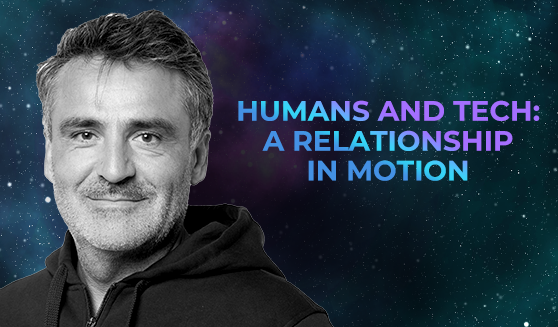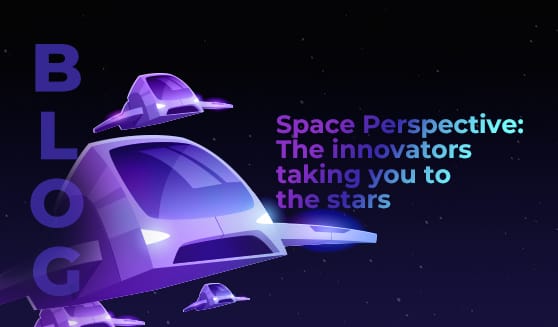
Stéphane Houdet (World’s #1 Paralympic Tennis Player) came to #LEAP22 to talk about how technology has enabled his career in sport – and how he found himself involved in the development of sports prosthetics.
There are numerous ParaSport competitions globally, but the best known is the paralympics, which hosted 4,403 athletes in 2020/21 across 28 sports. It’s a huge event; and while some of the athletes have wanted to compete in the games for as long as they can remember, many of them became paralympic athletes later in life – after unforeseen events that changed the course of their lives.
Houdet is one of those who embarked on a sports career at an older age. At 25, he was a veterinarian. He did well, and to celebrate a new professional collaboration after he’d begun to work with farms in the middle of France, he decided to go on a motorbike tour – visiting all the capital cities in Europe.
On that motorbike, he said, “I overtook a car that overtook bicycles at the same time and pushed me on the left side.”
There was a crash. And the result was “ a new technology that looked like this –” (he gestured to an x-ray of his badly broken leg) – “at the beginning.”
Technology in ParaSports
Tech development has had a significant impact on ParaSports in recent years. Depending on the sport and the athlete, technologies used include:
- Prosthetics (like the agile 1E96 prosthetic foot that makes it easier to walk, jog, and suddenly change direction)
- Carbon fibre wheelchairs
- Assisted devices (like the release brace for archery, which is strapped to the upper body to allow the athlete to release an arrow without the use of arms)
And they enable high-level competitive athleticism that isn’t dependent on the athletes’ bodies all being able to do more or less the same things.
As well as changing some ParaSports and enabling more athletes to compete, tech has also paved the way for entirely new sports to be invented and/or added to professional-level competitions. The hand-cycle, for example, enabled athletes to compete in the para-triathlonprosthetic feet allow athletes to jump further and run faster. And the monoski (a single, wide ski on which both feet face forwards, instead of sideways like on a snowboard) was adapted into a sit ski that enabled seated athletes to ski competitively.
Looking forward, it’s expected that robotics and intelligent devices will have a huge impact on medical rehabilitation – and then by extension, on ParaSports uptake and performance. One robotic system for physical and occupational therapy, InMotion2 (formerly called the MIT-MANUS), can sense the motion of the user and use that data to make decisions – along with providing haptic and/or visual feedback to the user. There are a range of use cases for tech like this – the new generation InMotion Arm, for example, can deliver intensive motor therapy to patients in order to help regain motor function after a neurological condition or an injury.
From injury to technology, ambition, and success
For Houdet, rehabilitation was immediately focused on sports. He learned to walk with a prosthetic limb, how to involve that leg in his physical movement. He quickly decided he wanted to play in the Paralympic Games, so he turned to golf – and together with an engineer friend, helped to develop a prosthetic leg that could pivot in a way that enabled him to play golf with enough power to drive the ball.
Through golf, Houdet met Johan Cruyff; a Dutch football legend known for saying: “Every disadvantage has its advantage.”
Cruyff was already working in wheelchair tennis, and he introduced Houdet to the sport. It was a natural fit – and just four years later, Houdet won his first gold medal in wheelchair doubles at the 2008 Paralympics in Beijing.
While Houdet’s achievements in wheelchair tennis are impressive to say the least, what we’re really interested in at LEAP is the tech that he helped to develop – and that enabled him to build his career.
An injury drove his ambition to compete in ParaSports. That ambition connected him with tech innovators so he became involved in developing specific technologies to enable his ambition. And through those technologies, he and his ambition changed again.
It’s a powerful example of the way that humans and technology create, influence, and shape each other. Our relationship with tech isn’t static, but constantly in motion. Which is exactly why assistive technology shouldn’t be seen as only interesting to the people who need it. Everyone should be interested in tech development in this sector – because it’s a sector full of use cases for technology that are positive, supportive of human life and ambition, and innovative in both design and adaptation.








